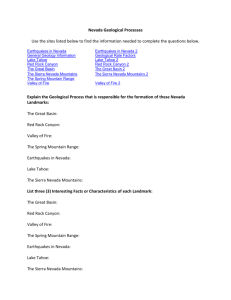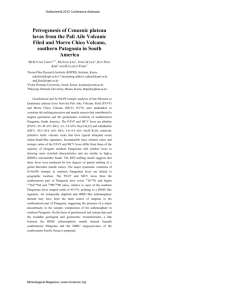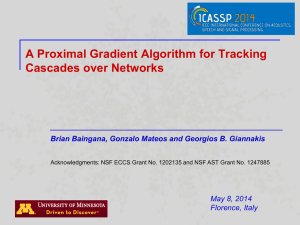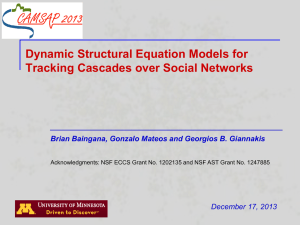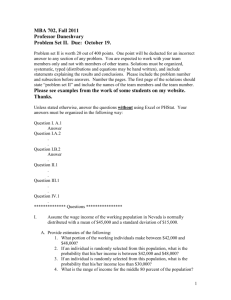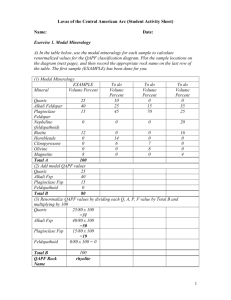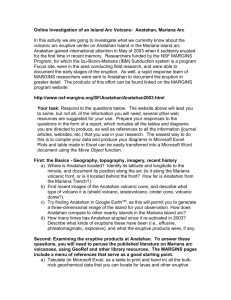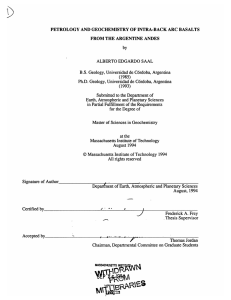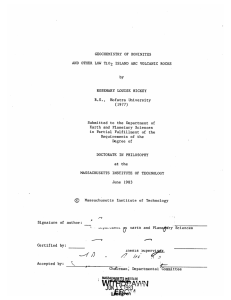Acid mine drainage can be a significant environmental problem
advertisement
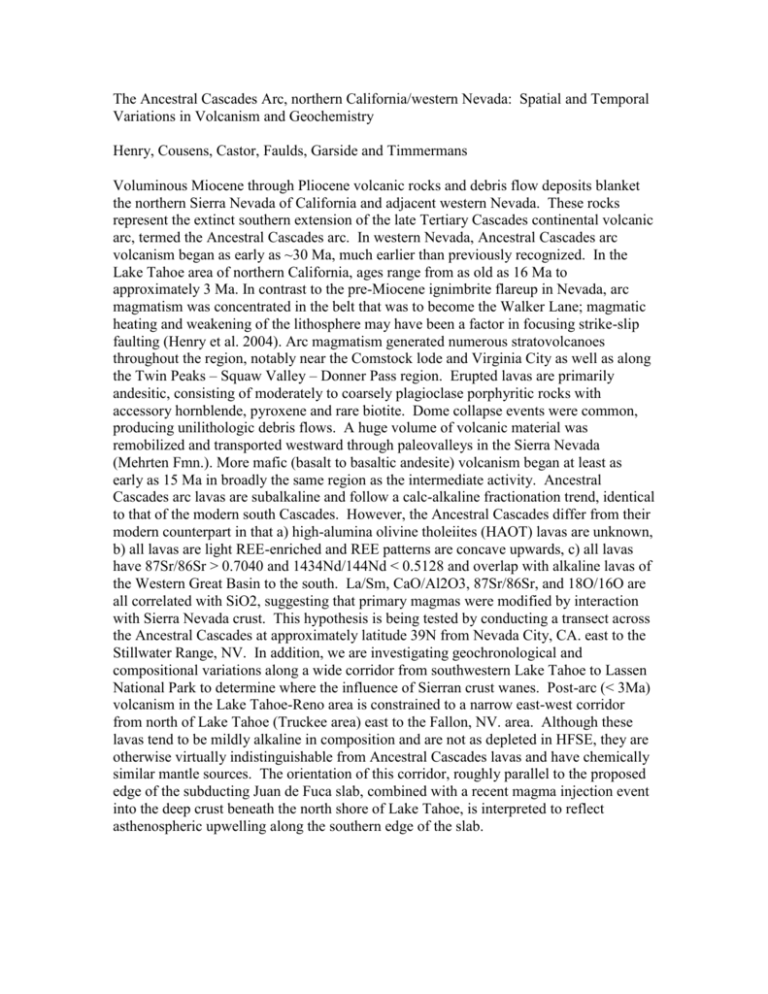
The Ancestral Cascades Arc, northern California/western Nevada: Spatial and Temporal Variations in Volcanism and Geochemistry Henry, Cousens, Castor, Faulds, Garside and Timmermans Voluminous Miocene through Pliocene volcanic rocks and debris flow deposits blanket the northern Sierra Nevada of California and adjacent western Nevada. These rocks represent the extinct southern extension of the late Tertiary Cascades continental volcanic arc, termed the Ancestral Cascades arc. In western Nevada, Ancestral Cascades arc volcanism began as early as ~30 Ma, much earlier than previously recognized. In the Lake Tahoe area of northern California, ages range from as old as 16 Ma to approximately 3 Ma. In contrast to the pre-Miocene ignimbrite flareup in Nevada, arc magmatism was concentrated in the belt that was to become the Walker Lane; magmatic heating and weakening of the lithosphere may have been a factor in focusing strike-slip faulting (Henry et al. 2004). Arc magmatism generated numerous stratovolcanoes throughout the region, notably near the Comstock lode and Virginia City as well as along the Twin Peaks – Squaw Valley – Donner Pass region. Erupted lavas are primarily andesitic, consisting of moderately to coarsely plagioclase porphyritic rocks with accessory hornblende, pyroxene and rare biotite. Dome collapse events were common, producing unilithologic debris flows. A huge volume of volcanic material was remobilized and transported westward through paleovalleys in the Sierra Nevada (Mehrten Fmn.). More mafic (basalt to basaltic andesite) volcanism began at least as early as 15 Ma in broadly the same region as the intermediate activity. Ancestral Cascades arc lavas are subalkaline and follow a calc-alkaline fractionation trend, identical to that of the modern south Cascades. However, the Ancestral Cascades differ from their modern counterpart in that a) high-alumina olivine tholeiites (HAOT) lavas are unknown, b) all lavas are light REE-enriched and REE patterns are concave upwards, c) all lavas have 87Sr/86Sr > 0.7040 and 1434Nd/144Nd < 0.5128 and overlap with alkaline lavas of the Western Great Basin to the south. La/Sm, CaO/Al2O3, 87Sr/86Sr, and 18O/16O are all correlated with SiO2, suggesting that primary magmas were modified by interaction with Sierra Nevada crust. This hypothesis is being tested by conducting a transect across the Ancestral Cascades at approximately latitude 39N from Nevada City, CA. east to the Stillwater Range, NV. In addition, we are investigating geochronological and compositional variations along a wide corridor from southwestern Lake Tahoe to Lassen National Park to determine where the influence of Sierran crust wanes. Post-arc (< 3Ma) volcanism in the Lake Tahoe-Reno area is constrained to a narrow east-west corridor from north of Lake Tahoe (Truckee area) east to the Fallon, NV. area. Although these lavas tend to be mildly alkaline in composition and are not as depleted in HFSE, they are otherwise virtually indistinguishable from Ancestral Cascades lavas and have chemically similar mantle sources. The orientation of this corridor, roughly parallel to the proposed edge of the subducting Juan de Fuca slab, combined with a recent magma injection event into the deep crust beneath the north shore of Lake Tahoe, is interpreted to reflect asthenospheric upwelling along the southern edge of the slab.
